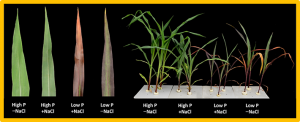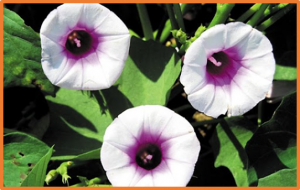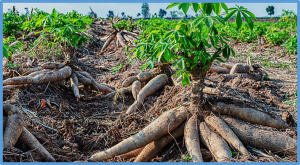MeFtsZ2-1 is a key gene for plant plastid division, but the mechanism by which MeFtsZ2-1 affects pigment accumulation in cassava (Manihot esculenta Crantz) through plastids remains unclear. We found that MeFtsZ2-1 overexpression in cassava (OE) exhibited darker colors of leaves, with increased levels of anthocyanins and carotenoids. Further observation via Transmission Electron Microscopy (TEM) revealed no apparent defects in chloroplast structure but an increase in the number of plastoglobule in OE leaves. RNA-seq results showed 1582 differentially expressed genes (DEGs) in leaves of OE.
Zinc (Zn) is an essential micronutrient but can be cytotoxic when present in excess. Plants have evolved mechanisms to tolerate Zn toxicity. To identify genetic loci responsible for natural variation of plant tolerance to Zn toxicity, we conduct genome-wide association studies for root growth responses to high Zn and identify 21 significant associated loci. Among these loci, we identify Trichome Birefringence (TBR) allelic variation determining root growth variation in high Zn conditions.
The EFSA Panel on Food Additive and Flavourings (FAF Panel) provides a scientific opinion on the safety of soy leghemoglobin from genetically modified Komagataella phaffii as a food additive in accordance with Regulation (EC) No 1331/2008. The proposed food additive, LegH Prep, is intended to be used as a colour in meat analogue products. The yeast Komagataella phaffii strain MXY0541 has been genetically modified to produce soy leghemoglobin;
Low temperature is a critical factor affecting the geographical distribution, growth, development, and yield of soybeans, with cold stress during seed germination leading to substantial productivity loss. In this study, an association panel comprising 260 soybean accessions was evaluated for four germination traits and four cold tolerance index traits, revealing extensive variation in cold tolerance.
This analysis evaluates the most recent developments in genetic modification investigation worldwide. Recent challenges in genetically modified technology include regulatory hurdles, ethical concerns, and the ecological impacts of genetically modified organisms (GMOs). Developments such as CRISPR-Cas9 and other genome-editing technologies have revolutionized the field, offering more precise and efficient methods for genetic modification. We followed a bibliometric analysis approach based on the bibliographic details retrieved from the Web of Science core collection in January 2020
Phosphorus (P) is an essential element for plant growth, and its deficiency can cause decreased crop yield. This study systematically evaluated the low-phosphate (Pi) response traits in a large population at maturity and seedling stages, and explored candidate genes and their interrelationships with specific traits. The results revealed a greater sensitivity of seedling maize to low-Pi stress compared to that at maturity stage.
Late blight caused by the oomycete fungus Phytophthora infestans (Pi) is the most serious obstacle to potato (Solanum tuberosum) production in the world. A super race isolate, CN152, which was identified from Sichuan Province, China, could overcome nearly all known late blight resistance genes and caused serious damage in China. The potato genotype SD20 was verified to be highly resistant to CN152; however, the molecular regulation network underlying late blight resistance pathway remains unclear in SD20. Here, we performed a time-course experiment to systematically profile the late blight resistance response genes using RNA-sequencing in SD20.
In this study, we successfully identified and categorized 95 CYP450 genes from the sweet potato genome into 5 families and 31 subfamilies. The predicted subcellular localization results indicate that CYP450s are distributed in the cell membrane system. The promoter region of the IbCYP450 genes contains various cis-acting elements related to plant hormones and stress responses. In addition, ten conserved motifs (Motif1-Motif10) have been identified in the IbCYP450 family proteins, with 5 genes lacking introns and only one exon. We observed extensive duplication events within the CYP450 gene family, which may account for its expansion.
Cassava mosaic disease (CMD) is a serious threat to cassava production in sub-Saharan Africa. The use of genomic-assisted selection at the seedling trial stage would help to reduce the time for release, breeding cost, and resources used, hence increase selection efficiency in cassava breeding programs. Five cassava populations were screened for resistance to CMD during the seedling evaluation trial at 1, 3, and 5 months after planting using a scale of 1-5.
Genome annotation files play a critical role in dictating the quality of downstream analyses by providing essential predictions for gene positions and structures. These files are pivotal in decoding the complex information encoded within DNA sequences. Here, we generated experimental data resolving RNA 5'- and 3'-ends as well as full-length RNAs for cassava TME12 sticklings in ambient temperature and cold.


 Curently online :
Curently online :
 Total visitors :
Total visitors :









